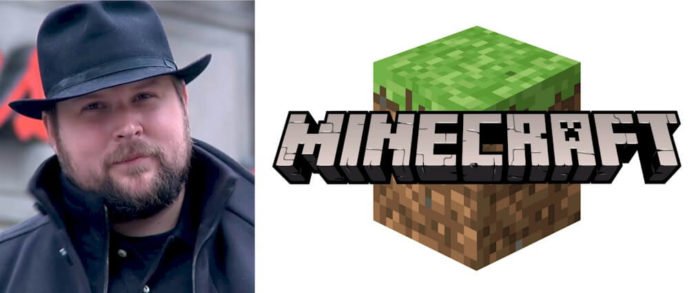If you love playing video games, it isn’t easy to talk about PC gaming without mentioning the famous video game Minecraft and the continually evolving Minecraft logo. Although the sandbox video game logo was modified several times, its fundamental building block—cobblestone—has been present in all versions.
The Minecraft logo has undergone three main redesigns since its unused trial version was unveiled in 2009. Minecraft’s current logo is quite simple in terms of color palette and shapes, but it still stands out from thousands of video games in the world.
Minecraft Logo Evolution
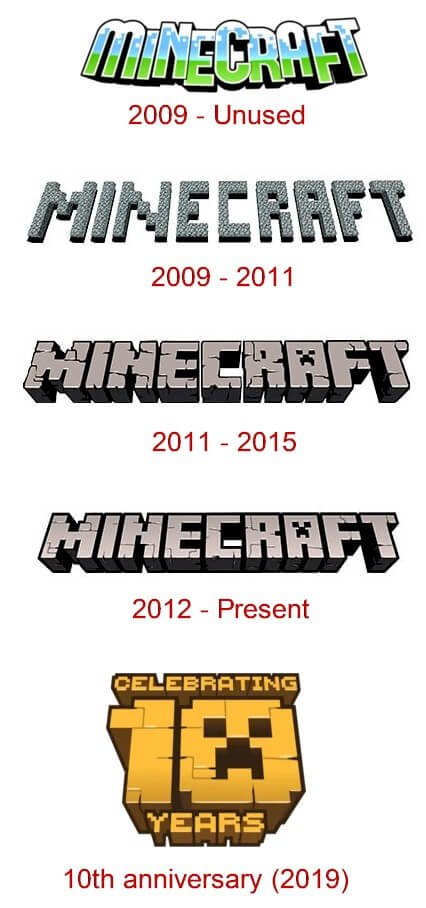
Most gaming logos are created to portray a key trait of the video game they stand for, and Minecraft’s logo is no exception. There have been three significant alterations to the Minecraft logo since the first unused version appeared.
First Official Trial Minecraft Logo: 2009
Designed by Hayden “Dock” Scott-Baron in 2009, the original Minecraft logo featured capital letters with round edges, which act as an opening to a sort of cartoon, open concave horizon. Inside the letters of “MINECRAFT,” there’s a light blue sky with clouds. The clouds are a bit pixelated to portray a low-bit console system, and there’s also green grass.
2009-2011
A logo with unique graphics appeared in May 2009. Graving paving stones, which stand as a building material in the gaming world, line the word “Minecraft.” The letters have a rough texture and comprise separate square segments. The lettering is placed horizontally at a narrow-angle. Due to black shadows, the inscription appears to hang in space.
2011-2015
This Minecraft logo version isn’t much changed from the last one. While designers got rid of the shadows, they left a black shade on the inside edges. They also improved the 3D effect, rendering the letters thicker and shorter.
Another change was made to the texture. Now, square paving stones don’t line the word “Minecraft” anymore, but the name was carved from several cobblestones, which have cracks all over.
Also worth noting is that the letter “A” is stylized. Inside the letter is the image of the most famous monster in Minecraft—Creeper. This creature was created accidentally by Marcus Persson when he attempted to create a pig.
Also, the current logo had several different versions. They were specifically developed for the Bedrock Edition and Java Edition. All versions had minor differences.
2012-Present
The art style was modernized, and the logo was made more “pixelated” in 2012. To achieve this, the designers smoothed out the edges, blurred the cracks, and circled all letters of the word “Minecraft” with thick, black contours. Apart from that, nothing else was changed—the shapes, proportions, and colors stayed the same. As before, the letter “A” immortalizes Creeper.
At first, this logo version was only used for the Xbox 360 Edition. It was in 2015 that it became the primary Minecraft logo. This happened after Minecraft and Mojang AB were acquired by Microsoft.
The Minecraft Logo Design Elements
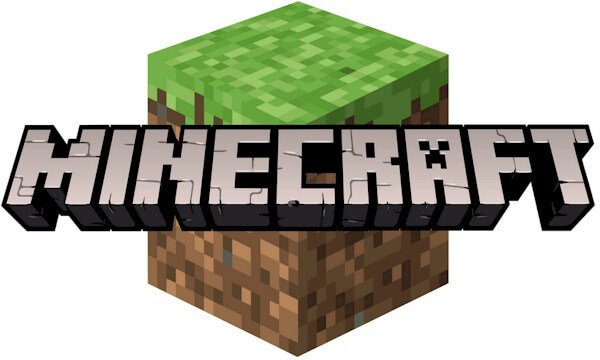
The familiar Minecraft symbol appears in promotional materials and the game. It’s a stylized wordmark made up of several block cubes representing building materials in a fictional universe. There are 3-dimensional letters at a small angle on the horizontal plane. Irregular cracks cover their surface, making it appear that they’re carved from stone.
The Minecraft font is called “MineCrafter” designed by Madpixel Designs. The pixelated typeface is called Stgotic. It was designed for low-resolution screen devices.
The letters’ distinctive features include right angles, no serifs, and great height (in three-dimensional space). The logo was designed from scratch. It wasn’t made of standard fonts but resembled a picture rather than a wordmark.
Several gray shades were used for the surface to create the cobblestone feel, with black used for outlines, shadows, and cracks. This mixture matches the building blocks color in the game.
The History of Minecraft
Minecraft is definitely one of the most popular games ever created, especially in the world of PCs. Even though it was created as a PC game, it has successfully crossed over to and adapted to various consoles, making for easy, smooth play without the standard hitches that newbie gamers hate to resolve.
The availability and adaptability of the various Minecraft variants, covering the whole spectrum of consoles and platforms, speaks to the game’s popularity.
In a nutshell, Minecraft is a phenomenal video game that’s built on the premise that gamers need to be creative. Have no fear, though—it gives you lots of outlets for your gamer aggression with countless opportunities to fight your enemies.
Currently, Minecraft boasts an online game realm that’s bigger than the entire earth’s surface. But it didn’t begin like that. Slowly but surely, the video game has grown and become much more significant than its modest origins. Let’s go over the history of Minecraft from where it started up to the present and future of this iconic game.
The Creator Of Minecraft
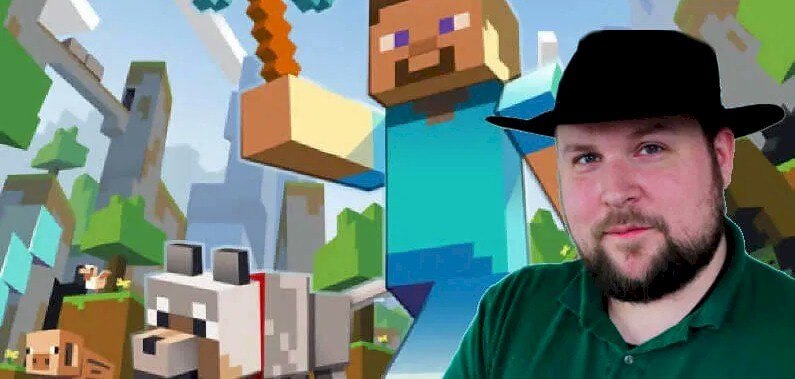 In 2009, Marcus Persson, aka Notch, introduced what he first named “Cave Game.” He released this game on PC, and it immediately became popular among folks who liked to design gaming worlds. At that point, Cave Man was much less a game than a source tool for most people, and users could create the gaming world using the building blocks that Persson had set up.
In 2009, Marcus Persson, aka Notch, introduced what he first named “Cave Game.” He released this game on PC, and it immediately became popular among folks who liked to design gaming worlds. At that point, Cave Man was much less a game than a source tool for most people, and users could create the gaming world using the building blocks that Persson had set up.
When this little project began to take off, Persson released its updated format named Minecraft, but that version is still far removed from the game people know today on consoles and PCs. It was mostly very basic, but early versions allowed for far more than simply building.
The fact that Minecraft was a resource management simulation as well made it so unique. It let players collect the resources they needed for creation so that the designs meant something to them because they had to construct them with resources they’d gathered independently.
The influence of this game mechanic is clear to see in almost all video games today. Previously, other games required players to gather resources, but typically not to directly create something from scratch with their own hands.
Now, games such as Terraria, Skyrim, and plenty others have added a reasonably basic mechanic like this one. Players could also design items they could use (not just structures), fight monsters all over the world, and explore an infinite world. As earlier mentioned, that world only grew bigger and bigger.
Minecraft remained in beta for longer than most video games ever do. It was speculated that the game wouldn’t go past beta since new features were continually being added. Persson just kept modifying the project as players made suggestions and came up with new ideas.
The early Minecraft days were vital for the modding world. On PC, players usually modify their favorite games with programs others created for everybody to use or programs they created. These let them customize the game as they please, add new features or quests, and even improve the graphics to some degree.
Since its creation, Minecraft has remained a primary game, with very simple blocks making up the whole world and graphics looking like pixels. This enables the game to do unbelievable things with its awfully limited visuals and process requests much quicker than using high-end graphics. Minecraft also allows players to easily make changes at less cost than in a more contemporary-looking game.
Before the close of 2009, the Minecraft creator had added several modes to the game. They include Indev, Infdev, and Survival. At this point, Minecraft was still in the alpha stage.
Minecraft Released
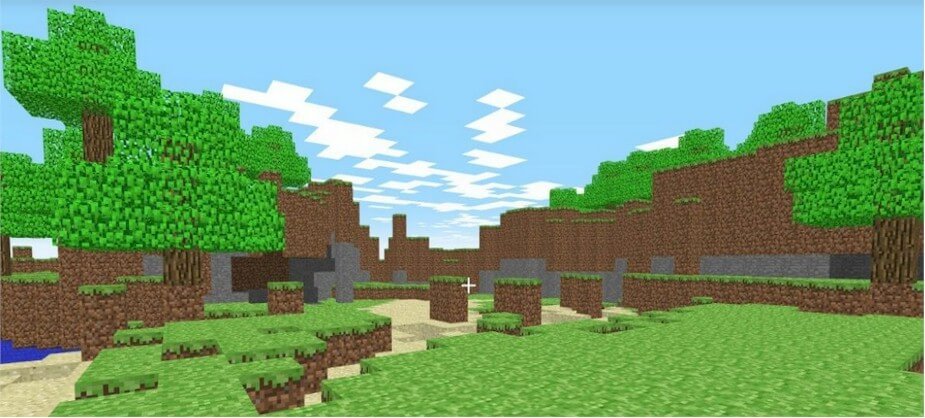 By 2010, the Minecraft creator had quit his day job to focus on Minecraft entirely. The game entered the beta stage, and the creator added new features, updated the game, and fixed bugs. While new variants of Minecraft cost money, all bugs were fixed for free during this stage.
By 2010, the Minecraft creator had quit his day job to focus on Minecraft entirely. The game entered the beta stage, and the creator added new features, updated the game, and fixed bugs. While new variants of Minecraft cost money, all bugs were fixed for free during this stage.
The beta stage began only once publisher Mojang expressed interest in the venture and started to finance its development. A full version of Minecraft was eventually released in 2011. Millions of copies of the Minecraft game were sold, and a worldwide phenomenon was born, even though there were still plenty of changes to come in the game.
Once Minecraft was published, bugs were being fixed, and new improvements were still made. The creator put new server hosts in place, letting the game run smoother and achieve much more with its supreme processing power. The Minecraft world expanded, and players attempted to travel all over the seemingly infinite digital space. The game was designed to continue nonstop, and new places were added to make it more interesting.
The End and Nether were included in the base world. The End was an array of islands where the game’s final boss lived, while the Nether was a hellish region accessible only by a portal. When the boss was defeated, the credits started to roll. However, players could keep returning to their worlds and exploring the Minecraft environment after beating the game.
Minecraft Hits All Platforms
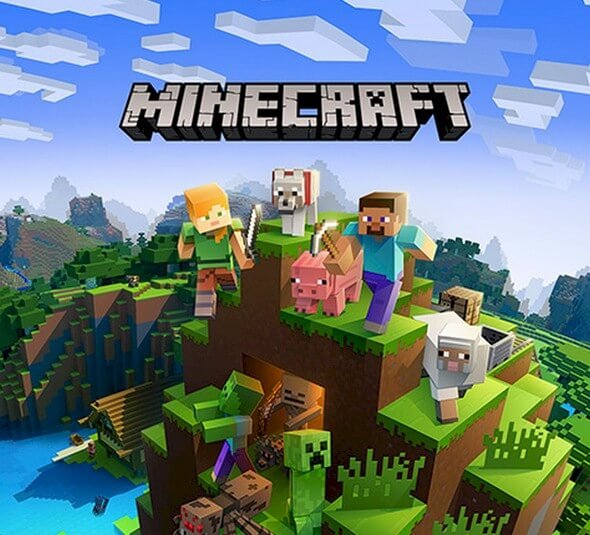
Mojang released a few Minecraft versions while they held the published rights, putting out a free-to-play version called Classic Minecraft on PC, as well as the complete version they’d put most of their publishing efforts into. However, Microsoft bought the Minecraft brand and game from the creators a few years later and kicked off a publishing frenzy.
Microsoft did add Minecraft to their platforms, the Xbox One and Xbox 360, later introducing the game to Wii U and PlayStation. Today, Minecraft is even on Windows 10 and mobile operating systems, and so far, there are no signs of Microsoft easing off on the development and publishing of the game.
Minecraft has expanded far beyond its single-game origins. Microsoft contracts Telltale Games to create Minecraft Story Mode, a story-based, single-player game that is mostly like an interactive narrative.
Moreover, Microsoft also released an educational version of Minecraft to be used by students, and its major focus was on exploration and construction rather than fighting. Microsoft continues to back the Minecraft base game by releasing well-timed skin packs, which provide the central characters with new looks.
You can dress your characters up like pop culture icons, as well as holiday favorites, with characters from Harry Potter and Star Wars. No matter what characters you like, you can find skins that’ll interest you. Dozens of Minecraft skins have already been released, and more and more are being released all the time.
Minecraft Moving Forward
There have been rumors of a Minecraft sequel for quite some time. In any case, this original video game is over a decade old now, and as one of the most popular games ever, it’s only natural that it’d get a follow-up.
Thus far, spinoffs, remasters, and updates look like the only development happening in the game, and Microsoft is cautious about divulging any factual information about a sequel.
Everybody in the gaming world seems to think that a sequel will arrive, but it’s unknown when. For now, Microsoft is more focused on protecting the Minecraft brand and capitalizing on what this game has to offer than making more money with a sequel.
They paid a tidy sum for this game and brand, so, understandably, they’ll bide their time when it comes to releasing a sequel. They’ll want their sequel to be something that takes the brand to the next level for another ten years or so, if necessary.
Wrapping Up the Minecraft Logo
 Minecraft is a popular sandbox video game in which players create things using blocks. It can also be defined as a three-dimensional game for single-player or multi-player use that allows players to fashion buildings out of blocks in a three-dimensional world.
Minecraft is a popular sandbox video game in which players create things using blocks. It can also be defined as a three-dimensional game for single-player or multi-player use that allows players to fashion buildings out of blocks in a three-dimensional world.
You can play the game online with strangers, friends, or all by yourself. Some of the game’s more complex environments were created by teams of developers working for months.
There are many Minecraft updates to come in the next several years. The game has changed beyond recognition over the past decade it’s been in existence. Minecraft is always evolving, and people at Microsoft and Mojang are continually working on the game to improve it and ensure that it’s challenging and fun at the same time.

